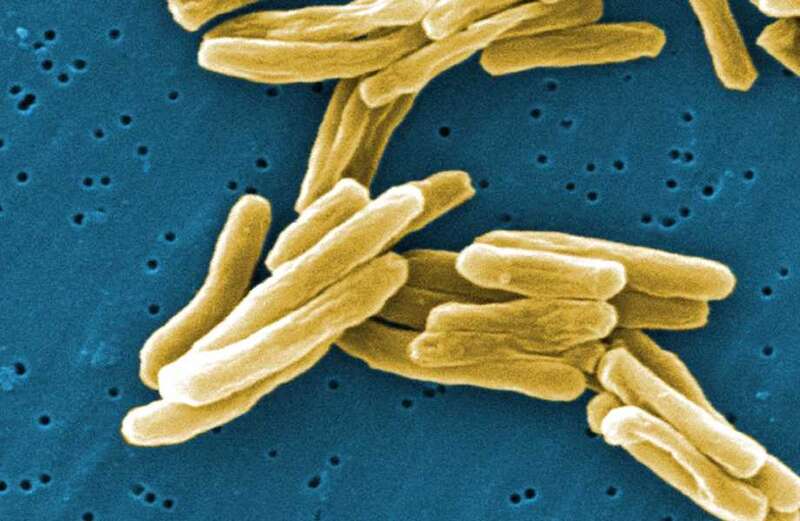MANY people who catch the world's 'mostly deadly infection' may feel perfectly healthy, scientists have found.
Tuberculosis (TB) kills millions of people across the globe each year.

Until now, experts have believed that people with the contagious version of the disease - called active TB - showed symptoms such as the signature cough.
However, recent surveys have revealed that many people with active TB feel fine.
TB, once called 'consumption' by the Victorians, is currently split into two categories: latent and active.
 The 7 signs of an unhealthy gut amid 'disturbing' surge in cancer in under-50s
The 7 signs of an unhealthy gut amid 'disturbing' surge in cancer in under-50s
When someone has active TB, they have symptoms and can spread the disease to other people through coughing or sneezing.
Latent TB is when the bacteria is in the body, but there are no symptoms, and it can't be passed on.
Scientists from London, Australia and South Africa are calling for a total rehaul of the way the disease is categorised to stop it from spreading silently from symptomless victims and eventually "eradicate the disease".
It comes as scientists recently cast doubt on the assumption that TB only spreads through droplets released by coughs and sneezes, suggesting that the simple act of breathing could be enough to spread the infection.
The proposed TB classification system, published in The Lancet Respiratory Medicine, will include a category for the disease when in its early stages when it's both contagious and symptomless.
Co author of the paper, Professor Rein Houben, from the London School of Hygiene & Tropical Medicine, said: “To prevent transmission of TB, we need to move away from focusing just on the very sick and look at earlier disease states, identifying people who may be infectious for months or years before they develop TB symptoms."
“Our consensus framework replaces the old binary concept of ‘active’ versus ‘latent’ TB with a more detailed classification system that, if widely adopted, could help improve treatment for those with early-stage TB and drive forward efforts to eradicate the disease.”
Health officials recently raised the alarm over a surge of TB cases in England.
Cases in the UK increased to about 5,000 last year and are expected to continue rising in 2024, according to the UK Health Security Agency.
Reports on suspected cases suggest London is the national hotspot for the infection.
 Urgent norovirus warning to holidaymakers as outbreak sparks ‘summer surge’ fear
Urgent norovirus warning to holidaymakers as outbreak sparks ‘summer surge’ fear
The Big Smoke logged 29 suspected cases last week, almost three times as many other badly affected regions.
This is followed by the East of England and the North West, where doctors noted ten suspected infections.
Last month, Brits were warned to get checked for TB if they have a lingering cough, as the deadly disease can easily be mistaken for a cold or the flu.

Dr Esther Robinson, head of the TB unit at UKHSA, said: "A cough that usually has mucus and lasts longer than three weeks can be caused by a range of other issues, including TB.
"Please speak to your GP if you think you could be at risk.”
Globally, 7.5million people were diagnosed with TB in 2022 - the highest number ever recorded.
The World Health Organisation (WHO) previously said this was because many people were unable to get a diagnosis or receive treatment during Covid lockdowns.
A separate report found cases of drug-resistant TB had increased by three per cent between 2020 and 2021.
What is TB?
TB remains one of the world’s most deadly diseases and the second leading infectious killer after Covid-19.
The bacterial infection spreads in the air when people carrying the bug cough, sneeze or spit.
Symptoms include a cough for more than three weeks, feeling exhausted, a high temperature, weight loss and loss of appetite.
It can be life-threatening, but most cases can be successfully treated with antibiotics.
The infection can spread to your brain, heart, abdomen, glands, bones and nervous system.
People are at higher risk of the disease if they are in close contact with a person known to have the disease, travel to countries with high rates of TB, are homeless, are addicted to drugs, have a weakened immune system or are in prison.
There's a jab that protects against the bug, but vaccination programmes have been scrapped in several countries over the last 20 years.



































